|
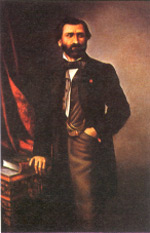 He was born into a family of small landowners and taverners. When he was seven he was helping the local church organist; at 12 he was studying with the organist at the main church in nearby Busseto, whose assistant he became in 1829. He already had several compositions to his credit. In 1832 he was sent to Milan, but was refused a place at the conservatory and studied with Vincenzo Lavigna, composer and former La Scala musician. He might have taken a post as organist at Monza in 1835, but returned to Busseto where he was passed over as maestro di cappella but became town music master in 1836 and married Margherita Barezzi, his patron's daughter (their two children died in infancy).
He was born into a family of small landowners and taverners. When he was seven he was helping the local church organist; at 12 he was studying with the organist at the main church in nearby Busseto, whose assistant he became in 1829. He already had several compositions to his credit. In 1832 he was sent to Milan, but was refused a place at the conservatory and studied with Vincenzo Lavigna, composer and former La Scala musician. He might have taken a post as organist at Monza in 1835, but returned to Busseto where he was passed over as maestro di cappella but became town music master in 1836 and married Margherita Barezzi, his patron's daughter (their two children died in infancy).
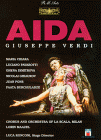 Verdi had begun an opera, and tried to arrange a performance in Parma or Milan; he was unsuccessful but had some songs published and decided to settle in Milan in 1839 where his Oberto was accepted at La Scala and further operas commissioned. It was well received but his next, Un giorno di regno, failed totally; and his wife died during its composition. Verdi nearly gave up, but was fired by the libretto of Nabucco and in 1842 saw its successful production, which carried his reputation across Italy, Europe and the New World over the next five years. It was followed by another opera also with marked political overtones, I lombardi alla prima crociata, again well received. Verdi's gift for stirring melody and tragic and heroic situations struck a chord in an Italy struggling for freedom and unity, causes with which he was sympathetic; but much opera of this period has political themes and the involvement of Verdi's operas in politics is easily exaggerated.
Verdi had begun an opera, and tried to arrange a performance in Parma or Milan; he was unsuccessful but had some songs published and decided to settle in Milan in 1839 where his Oberto was accepted at La Scala and further operas commissioned. It was well received but his next, Un giorno di regno, failed totally; and his wife died during its composition. Verdi nearly gave up, but was fired by the libretto of Nabucco and in 1842 saw its successful production, which carried his reputation across Italy, Europe and the New World over the next five years. It was followed by another opera also with marked political overtones, I lombardi alla prima crociata, again well received. Verdi's gift for stirring melody and tragic and heroic situations struck a chord in an Italy struggling for freedom and unity, causes with which he was sympathetic; but much opera of this period has political themes and the involvement of Verdi's operas in politics is easily exaggerated.
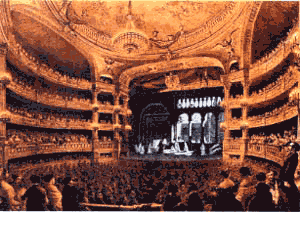 The period Verdi later called his 'years in the galleys' now began, with a long and demanding series of operas to compose and (usually) direct, in the main Italian centres and abroad: they include Ernani, Macbeth, Luisa Miller and eight others in 1844-50, in Paris and London as well as Rome, Milan, Naples, Venice, Florence and Trieste (with a pause in 1846 when his health gave way). Features of these works include strong, sombre stories, a vigorous, almost crude orchestral style that gradually grew fuller and richer, forceful vocal writing including broad lines in 9/8 and 12/8 metre and above all a seriousness in his determination to convey the full force of the drama. His models included late Rossini, Mercadante and Donizetti. He took great care over the choice of topics and about the detailed planning of his librettos. He established his basic vocal types early, in Ernani the vigorous, determined baritone, the ardent, courageous but sometimes despairing tenor, the severe bass; among the women there is more variation. The period Verdi later called his 'years in the galleys' now began, with a long and demanding series of operas to compose and (usually) direct, in the main Italian centres and abroad: they include Ernani, Macbeth, Luisa Miller and eight others in 1844-50, in Paris and London as well as Rome, Milan, Naples, Venice, Florence and Trieste (with a pause in 1846 when his health gave way). Features of these works include strong, sombre stories, a vigorous, almost crude orchestral style that gradually grew fuller and richer, forceful vocal writing including broad lines in 9/8 and 12/8 metre and above all a seriousness in his determination to convey the full force of the drama. His models included late Rossini, Mercadante and Donizetti. He took great care over the choice of topics and about the detailed planning of his librettos. He established his basic vocal types early, in Ernani the vigorous, determined baritone, the ardent, courageous but sometimes despairing tenor, the severe bass; among the women there is more variation.
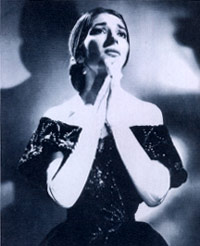 The 'galley years' have their climax in the three great, popular operas of 1851-3. First among them is Rigoletto, produced in Venice (after trouble with the censors, a recurring theme in Verdi) and a huge success, as its richly varied and unprecedentedly dramatic music amply justifies. No less successful, in Rome, was the more direct Il trovatore, at the beginning of 1853; but six weeks later La traviata, the most personal and intimate of Verdi's operas, was a failure in Venice - though with some revisions it was favourably received the following year at a different Venetian theatre. With the dark drama of the one, the heroics of the second and the grace and pathos of the third, Verdi had shown how extraordinarily wide was his expressive range.
The 'galley years' have their climax in the three great, popular operas of 1851-3. First among them is Rigoletto, produced in Venice (after trouble with the censors, a recurring theme in Verdi) and a huge success, as its richly varied and unprecedentedly dramatic music amply justifies. No less successful, in Rome, was the more direct Il trovatore, at the beginning of 1853; but six weeks later La traviata, the most personal and intimate of Verdi's operas, was a failure in Venice - though with some revisions it was favourably received the following year at a different Venetian theatre. With the dark drama of the one, the heroics of the second and the grace and pathos of the third, Verdi had shown how extraordinarily wide was his expressive range.
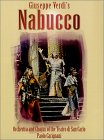 Later in 1853 he went - with Giuseppina Strepponi, the soprano with whom he had been living for several years, and whom he was to marry in 1859 - to Paris, to prepare Les vêpres siciliennes for the Opéra, where it was given in 1855 with modest success. Verdi remained there for a time to defend his rights in face of the piracies of the Théâtre des Italiens and to deal with translations of some of his operas. The next new one was the sombre Simon Boccanegra, a drama about love and politics in medieval Genoa, given in Venice. Plans for Un ballo in maschera, about the assassination of a Swedish king, in Naples were called off because of the censors and it was given instead in Rome (1859). Verdi was involved himself in political activity at this time, as representative of Busseto (where he lived) in the provincial parliament; later, pressed by Cavour, he was elected to the national parliament, and ultimately he was a senator. In 1862 La forza del destino had its premiere at St. Petersburg. A revised Macbeth was given in Paris in 1865, but his most important work for the French capital was Don Carlos, a grand opera after Schiller in which personal dramas of love, comradeship and liberty are set against the persecutions of the Inquisition and the Spanish monarchy. It was given in 1867 and several times revised for later, Italian revivals.
Later in 1853 he went - with Giuseppina Strepponi, the soprano with whom he had been living for several years, and whom he was to marry in 1859 - to Paris, to prepare Les vêpres siciliennes for the Opéra, where it was given in 1855 with modest success. Verdi remained there for a time to defend his rights in face of the piracies of the Théâtre des Italiens and to deal with translations of some of his operas. The next new one was the sombre Simon Boccanegra, a drama about love and politics in medieval Genoa, given in Venice. Plans for Un ballo in maschera, about the assassination of a Swedish king, in Naples were called off because of the censors and it was given instead in Rome (1859). Verdi was involved himself in political activity at this time, as representative of Busseto (where he lived) in the provincial parliament; later, pressed by Cavour, he was elected to the national parliament, and ultimately he was a senator. In 1862 La forza del destino had its premiere at St. Petersburg. A revised Macbeth was given in Paris in 1865, but his most important work for the French capital was Don Carlos, a grand opera after Schiller in which personal dramas of love, comradeship and liberty are set against the persecutions of the Inquisition and the Spanish monarchy. It was given in 1867 and several times revised for later, Italian revivals.
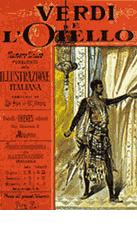 Verdi returned to Italy, to live at Genoa. In 1870 he began work on Aida, given at Cairo Opera House at the end of 1871 to mark the opening of the Suez Canal (Verdi was not present): again in the grand opera tradition, and more taut in structure than Don Carlos. Verdi was ready to give up opera; his works of 1873 are a string quartet and the vivid, appealing Requiem in honour of the poet Manzoni, given in 1874-5, in Milan (San Marco and La Scala, aptly), Paris, London and Vienna. In 1879 the composer-poet Boito and the publisher Ricordi prevailed upon Verdi to write another opera, Otello; Verdi, working slowly and much occupied with revisions of earlier operas, completed it only in 1886. This, his most powerful tragic work, a study in evil and jealousy, had its premiere in Milan in 1887; it is notable for the increasing richness of allusive detail in the orchestral writing and the approach to a more continuous musical texture, though Verdi, with his faith in the expressive force of the human voice, did not abandon the 'set piece' (aria, duet etc) even if he integrated it more fully into its context - above all in his next opera. This was another Shakespeare work, Falstaff, on which he embarked two years later - his first comedy since the beginning of his career, with a score whose wit and lightness betray the hand of a serene master, was given in 1893. That was his last opera; still to come was a set of Quattro pezzi sacri (although Verdi was a non-believer).
Verdi returned to Italy, to live at Genoa. In 1870 he began work on Aida, given at Cairo Opera House at the end of 1871 to mark the opening of the Suez Canal (Verdi was not present): again in the grand opera tradition, and more taut in structure than Don Carlos. Verdi was ready to give up opera; his works of 1873 are a string quartet and the vivid, appealing Requiem in honour of the poet Manzoni, given in 1874-5, in Milan (San Marco and La Scala, aptly), Paris, London and Vienna. In 1879 the composer-poet Boito and the publisher Ricordi prevailed upon Verdi to write another opera, Otello; Verdi, working slowly and much occupied with revisions of earlier operas, completed it only in 1886. This, his most powerful tragic work, a study in evil and jealousy, had its premiere in Milan in 1887; it is notable for the increasing richness of allusive detail in the orchestral writing and the approach to a more continuous musical texture, though Verdi, with his faith in the expressive force of the human voice, did not abandon the 'set piece' (aria, duet etc) even if he integrated it more fully into its context - above all in his next opera. This was another Shakespeare work, Falstaff, on which he embarked two years later - his first comedy since the beginning of his career, with a score whose wit and lightness betray the hand of a serene master, was given in 1893. That was his last opera; still to come was a set of Quattro pezzi sacri (although Verdi was a non-believer).
Behind every great man there stands a great woman
Giuseppina (Clelia Maria Josepha) Strepponi was born in September 1815 in the Lombardy town of Lodi. She studied voice and piano with her father Feliciano Strepponi, a promising composer, and gained a scholarship at the Conservatory in Milan, where she studied from 1830-1834. She became one of the leading sopranos of her time in the late 1830s, singing roles like Amina in La Sonnambula, Adina in L'Elisir d'Amore and Lucia di Lammermoor. She debuted at La Scala as Elvira in Bellini's 'I Puritani' on 20th April 1839, and was much in demand at Italian opera houses because of her clear timbre and excellent musicianship. She also cut a fine figure on stage and was a gifted actress.
It was just as well that impresarios were keen to hire her, because she needed all the work she could get. After her father's early death she supported her mother and her younger brothers and sisters.
It was her recommendation to Bartolomeo Merelli, the impresario, that led to Verdi's debut at La Scala with his first performed opera, Oberto, Conte di San Bonifacio, and in the subsequent years she championed him where she could as his career as a composer slowly got going.
It was originally planned that Giuseppina should sing herself in the premiere of 'Oberto', but she was prevented from taking up this engagement: worn out from constant overwork and the stress of two early pregnancies in as many years (the children were 'unfortunate accidents' - in the language of the time - and put into care. There were probably two more such 'accidents' in the next couple of years), her voice was in shreds, she was ill and depressed, and her career was on the wane.
In 1841 Donizetti, probably her lover at the time, wrote the title role of 'Adelia' for her, but the premiere in Rome did not find her in good vocal estate. Reviewers were beginning to refer to her many crises and impresarios were giving her fewer and fewer bookings.
It was in this climate that, in 1842, she created the dramatic role of Abigaille in Verdi's first big success, Nabucco, although only a few days before the premiere doctors attested that 'unless she gave up her career, she would undoubtedly become a consumptive.' She got through the eight performances scheduled for her, but only just.
Giuseppina later sang the heavy soprano roles of Giselda in I Lombardi and Elvira in Ernani (although not at the respective premieres) but these dramatic parts coupled with her frail health finally put an end to her erstwhile brilliant career and she retired from the stage in 1846. Short of money, and no doubt on the run from her problems, she settled in Paris to give vocal lessons, and it was there that she met Verdi again in 1847. They had remained in touch over the previous years, mostly by way of correspondence, but now they fell deeply in love over the reworking of 'I Lombardi' into Jérusalem.
Small-town Busseto frowned on this unsanctioned union upon their return; Verdi, and particularly 'Peppina', had to put up with much unkind gossip, even after their move in 1851 from the Palazzo Dordoni on the main street of Busseto to the more secluded estate at Sant'Agata. No wonder Verdi put so much sympathy for his Violetta into the score when he decided to compose La Traviata later in 1852. Was he stating his case and thumbing his nose at the Bussetan bigots?
A concerned letter from his former father-in-law Antonio Barezzi, which reached Verdi during a later stay in Paris with his Peppina, received this deliberately underplayed but typically caustic reply:
21st January 1852
'... since we are in the way of making revelations it will not be difficult to raise the curtain which hides the mysteries enclosed within the four walls of my house, and tell you of my domestic life. I have nothing to hide. In my house there lives a free, independent lady, like me a lover of the solitary life, and possessed of a fortune quite sufficient for all her needs. Neither she nor I are accountable to anyone for our actions; but, on the other hand, who knows what our relationship is? What the links? What the ties? What rights I have over her, or she over me? Who knows whether she is or is not my wife? And if she is, who knows what the particular reasons are for not making it public? Who knows whether it is good or bad? Why might it not be a good thing? And even if it is bad, who has the right to condemn us? I will definitely say this much: in my house she is entitled to as much respect, or more, as I am myself, and no-one is permitted to forget this on any pretext; both in her conduct and character, she has every right to that special consideration she never fails to show towards others...'
In fact, Verdi soon made up with Barezzi, who came to appreciate Giuseppina's merits himself, but his relations with the town of Busseto remained strained for the rest of his life.
Verdi and Giuseppina obviously felt very secure in their relationship as it stood, and when they did get married at the end of that decade it was a quiet event, more like an afterthought. Passing through on their travels they stopped off near Geneva in the then Italian part of Savoy belonging to Piedmont, and on 29th August 1859 took the marriage vows in the village of Collonges-sous-Salève, at the parish church of Saint Martin.
Their union of fifty years was one of mutual affection and respect - apart from the inevitable hair in the soup, Verdi's 'mid-life' crisis in the 1870s. They were in perfect balance, not because they were alike, but because they complemented each other. Peppina had a great open sense of humour whereas Verdi's was more of the wry, quiet (and sarcastic) sort; she was good at languages, he found it hard to communicate verbally in anything other than Italian (her French was excellent and so was her Spanish - she translated the plays for him on which Il Trovatore and Simon Boccanegra were based). She was diplomatic, he could be blustery. Her nature was frank and congenial, he was a cynic with a fairly quick temper.
Nevertheless they shared many interests, not the least of which were music, literature, mutual friends and good food and wine. They remained childless, but in 1867 took on the guardianship of the 7-year-old Filomena Maria Cristina Verdi, daughter of one of Verdi's cousins. 'Fifao', as she was fondly called, later married Alberto Carrara of Busseto, the son of Verdi's lawyer, and himself also a lawyer. They were Verdi's heirs and to this day Sant'Agata is in the hands of the Carrara Verdi family.
Giuseppina was not only a very intelligent and well-educated woman, she was also a wise and patient woman, and weathered the storm created when Verdi's affection turned away from her: in 1869 he fell - hook, line and sinker - for the soprano Teresa Stolz.
Drained, sad and confused, Giuseppina came out of this emotional turmoil after seven years of heartbreak and uncertainty with her dignity more or less intact, even if the situation was not completely resolved.
Relative peace, or rather a truce, returned to the Verdi household by 1877, and discretion was the operative word. The correspondence between the two women during the 'ménage à trois' years is an object lesson in oblique remarks, veiled threats and barely concealed appeals. After 1877 their letters were less frequent and took on a different tone, almost sisterly, giving each other advice about dresses and lace, furs and furniture.
However hurt Giuseppina had been during this terrible time, she stuck it out with Verdi and never lost her deep affection and love for him. All the more remarkable because Verdi had shown a side of himself towards her in this period that was not very flattering to his character, ranging from longer than usual spells of morose silence to violent verbal and psychological abuse.
She remained his tireless champion and supporter in thought and in deed throughout the busy and highly creative years that were to follow with the revision of Simon Boccanegra and the new Otello and Falstaff.
Giuseppina Verdi Strepponi died at Sant'Agata on November 14, 1897. A letter written to her by Verdi fifty-one years earlier, in 1846 - a letter nobody ever saw except the writer and the recipient - was to be placed on her heart and buried with her, in accordance with her last will and testament. Is it too sentimental to lament the fact that the envelope was not found until after the coffin was sealed?
She never did get her husband to give up his agnostic stance: nevertheless her last words to him were: 'And now addio, my Verdi. As we were united in life, may God rejoin our spirits in Heaven.'
Behind this great man there stood a great woman indeed. Giuseppina Verdi Strepponi embodied the old adage as few women sharing their life with a moody and difficult creative genius have ever done.
He spent his last years in Milan, rich, authoritarian but charitable, much visited, revered and honoured. He died at the beginning of 1901; 28,000 people lined the streets for his funeral.
LIST OF WORKS
Operas
Oberto Conte di San Bonifacio (17th November, 1839; Teatro alla Scala, Milan)
Un Giorno di Regno (5th September 1840; Teatro alla Scala, Milan) (Il Finto Stanislao)
Nabucco (9th March 1842; Teatro alla Scala, Milan)
I Lombardi alla Prima Crociata (11th February 1843; Teatro alla Scala, Milan)
Ernani (9th March 1844; Teatro la Fenice, Venice)
I Due Foscari (3rd November 1844; Teatro Argentina, Rome)
Giovanna d'Arco (15th February 1845; Teatro alla Scala, Milan)
Alzira (12th August 1845; Teatro San Carlo, Naples)
Attila (17th March 1846; Teatro la Fenice, Venice)
Macbeth (14th March 1847; Teatro della Pergola, Florence)
I Masnadieri (22nd July 1847; Her Majesty's Theatre, London)
Jérusalem (26th November 1847; Académie Royale de Musique, Paris)
Il Corsaro (25th October 1848; Teatro Grande, Trieste)
La Battaglia di Legnano (27th January 1849; Teatro Argentina, Rome)
Luisa Miller (8th December 1849; Teatro San Carlo, Naples)
Stiffelio (16th November 1850; Teatro Grande, Trieste)
Rigoletto (11th March 1850; Teatro la Fenice, Venice)
Il Trovatore (19th January 1853; Teatro Apollo, Rome)
La Traviata (6th March 1853; Teatro la Fenice, Venice)
Les Vêpres Siciliennes (13th June 1855; Académie Impériale de Musique, Paris)
Simon Boccanegra (12th March 1857; Teatro la Fenice, Venice)
Aroldo (16th August 1857; Teatro Nuovo, Rimini)
Un Ballo in maschera (17th February 1859; Teatro Apollo, Rome)
La Forza del destino (10th November 1862; Bolshoi Theatre, St. Petersburg)
Don Carlos (11th March 1867; Académie Impériale de Musique, Paris)
Aïda (24th December 1871; Opera House, Cairo)
Otello (5th February 1887; Teatro alla Scala, Milan)
Falstaff (9 February 1893; Teatro alla Scala, Milan)
Non-Operatic Works:
Inno delle Nazioni (1862)
String Quartet in E minor (1873)
Requiem Mass (1874)
Four Sacred Pieces (1889 - 1898)
|













